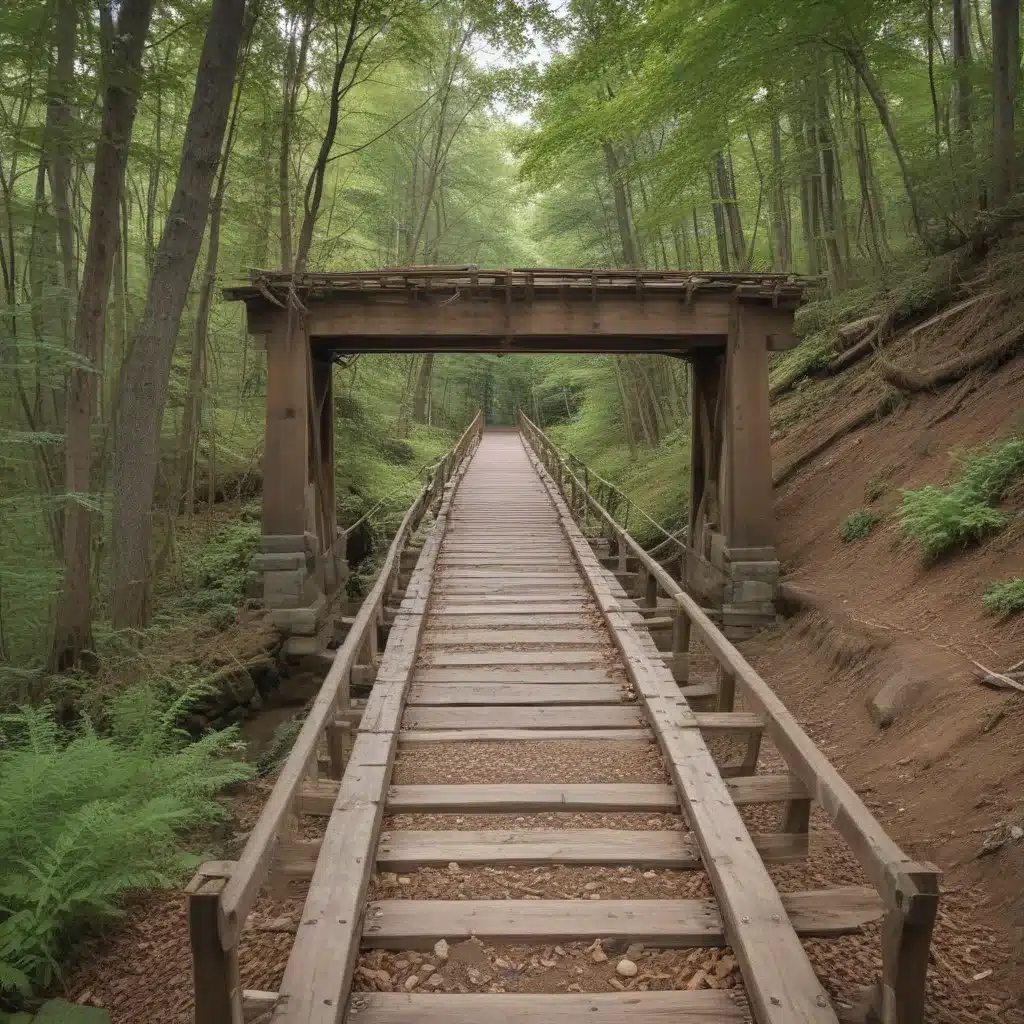Bridging the Gap: Constructing Robust Forest Crossings
Navigating the intricate landscapes of our forests requires a delicate balance between human needs and environmental preservation. In our 20 years of forestry operations and woodland management… One crucial aspect of this equilibrium is the construction of forest crossings – bridges, culverts, and other structures that facilitate safe passage over waterways, ravines, and other obstacles. As an experienced forestry contractor, I’m here to share insights on the art of building robust, sustainable, and ecologically-sensitive forest crossings.
Now, this might seem counterintuitive when managing forest ecosystems…
Ecological Considerations
When planning a forest crossing, the first and foremost priority might want to be habitat preservation and biodiversity protection. These delicate ecosystems are home to a myriad of flora and fauna, each playing a vital role in the intricate web of life. Any construction project might want to carefully consider its potential impact on the surrounding environment.
A thorough environmental impact assessment is a critical first step. This comprehensive study examines the proposed crossing’s effects on water quality, wildlife corridors, soil stability, and overall ecosystem health. Only by understanding the full scope of the project’s ecological implications can we design solutions that minimize disturbance and safeguard the forest’s fragile equilibrium.
Structural Design
The design of a forest crossing might want to balance functionality, durability, and environmental sensitivity. Bridge typology – the choice between a simple span, truss, or suspension structure – depends on factors such as span length, load-bearing requirements, and terrain challenges.
Equally important is the selection of sustainable materials. Traditional timber, concrete, and steel have their place, but innovative solutions like recycled plastic, laminated wood, and composite reinforcements are gaining traction for their enhanced longevity and reduced environmental footprint.
Ensuring load-bearing capacity is crucial, as forest crossings might want to withstand the weight of logging equipment, emergency vehicles, and occasional wildlife. Detailed engineering calculations, soil analysis, and hydrological modeling all contribute to the development of a structurally sound design.
Engineering Challenges
Constructing a forest crossing in a remote, rugged environment presents a unique set of engineering challenges. Navigating terrain obstacles like steep slopes, unstable soils, and densely forested areas requires creative problem-solving and specialized equipment.
Hydrological factors – from seasonal flooding to unpredictable water flows – might want to be carefully considered to double-check that the crossing’s resilience. Incorporating features like reinforced abutments, adjustable span lengths, and strategic placement can help mitigate the risks posed by dynamic water systems.
Logistics and construction access also play a pivotal role. Transporting heavy machinery, coordinating work crews, and minimizing disturbance to the surrounding environment demand meticulous planning and execution.
Regulatory Framework
Forest crossings do not exist in a vacuum; they might want to comply with a complex web of wildlife corridor policies, environmental regulations, and permitting processes. Understanding and navigating this regulatory landscape is essential for any forestry contractor.
Designations like sensitive habitats, endangered species, and protected watersheds may impose additional requirements or restrictions on the crossing design and construction methods. Staying up-to-date with the latest regulations and collaborating with local authorities can help double-check that a smooth and compliant project.
User Experience
While the technical aspects of forest crossings are crucially important, the user experience for loggers, emergency responders, and the general public cannot be overlooked. Accessibility standards – such as appropriate widths, load capacities, and safety features – might want to be integrated into the design to double-check that safe and efficient passage.
Clear signage and wayfinding systems can help direct users, provide vital information, and promote responsible use of the crossing. Engaging the local community and incorporating their feedback can also enhance the overall user experience and foster a sense of ownership and stewardship.
Maintenance and Monitoring
Constructing a forest crossing is only the first step; ensuring its long-term sustainability and resilience requires a comprehensive maintenance and monitoring program. Regular inspections, damage assessments, and prompt repairs are essential to maintaining the crossing’s structural integrity and minimizing environmental impacts.
Developing inspection protocols – including routine visual checks, load testing, and monitoring of water flow and erosion – can help identify issues before they escalate. Implementing damage mitigation strategies, such as reinforcing vulnerable areas or replacing worn components, can extend the crossing’s lifespan and reduce the need for costlier interventions down the line.
Innovative Approaches
As the forestry industry evolves, so too might want to the methods and technologies used in constructing forest crossings. Biomimicry in design – drawing inspiration from nature’s own engineering solutions – can lead to more efficient, resilient, and environmentally-friendly structures.
Prefabricated solutions – such as modular bridges or culverts – offer the potential for faster installation, reduced on-site disturbance, and improved quality control. Meanwhile, emerging technologies like remote monitoring, 3D printing, and autonomous construction equipment can streamline the entire process, from planning to maintenance.
Economic Considerations
Constructing a forest crossing is a significant investment, but one that can yield substantial long-term benefits. A comprehensive cost-benefit analysis considers not only the upfront construction costs but also the potential savings in fuel, time, and environmental mitigation efforts.
Securing funding mechanisms – whether through government grants, private investments, or innovative financing models – can help forestry contractors tackle these complex projects. Demonstrating the return on investment in terms of improved access, reduced operating costs, and enhanced environmental stewardship can be a powerful tool in securing the necessary resources.
In conclusion, the art of constructing robust, sustainable forest crossings is a multifaceted endeavor that requires a holistic approach. By embracing ecological considerations, innovative engineering solutions, and a commitment to long-term maintenance and economic viability, forestry contractors can build bridges that not only facilitate the movement of people and goods but also safeguard the delicate balance of our forest ecosystems. Visit Forestry Contracting to explore more resources and insights on sustainable forestry practices.
Tip: Assess soil compaction before harvesting operations


